When the future King Gustav III of Sweden returned from an extended stay at Versailles in 1771, he brought home with him a love of neoclassical style. The more restrained Swedish nature evolved the style into what we now call Gustavian.
It’s easy to confuse Gustavian decor with French neoclassicism and even rococo: The furniture boasts fluted legs, scalloped aprons, and carved detailing; chandeliers and mirrors glint with gold gilt. But the Swedes favored whitewashed woods and pale hues, rather than dark wood and jewel-tone colors, to compensate for the lack of sunlight during the long northern winters. And in keeping with a Scandinavian appreciation of simplicity, rich damasks and opulent tapestries were typically replaced with solid linen or cheery checked upholstery.
This moderation of French magnificence is perfect for today. Gustavian decor offers ornamentation and artistry, but not so much as to overwhelm your senses when you return home after a hectic day or to make a less-than-palatial abode feel cluttered. Below, some inspiration for making Gustavian style your style.

True, that fabulous daybed is French (Directoire, to be exact). But the whitewashed and stripped woods, the sheer white curtains, and the plain walls show why Gustavian style is so restful—and relatively simple to introduce into your home. Intimidated by the light-color upholstery? Opt for furnishings in stain-resistant performance fabrics. Photo by Paul Costello.

Antique and vintage Gustavian furniture often has a chippy, distressed finish because pieces were frequently repainted over the decades (or centuries). Glimmers of gold—the mirror frame, the dresser-top objects, the side table—accentuate the “chic” in this predecessor to “shabby chic” style. Photo courtesy of Julie Neill.
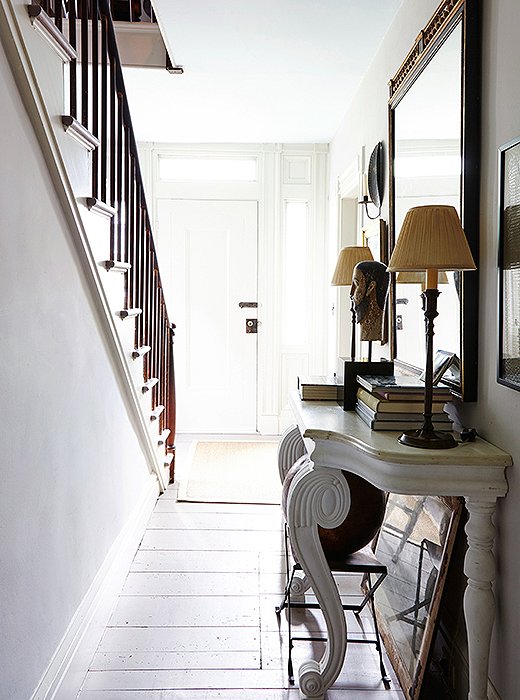
Painting your floorboards white instantly adds Gustavian grace to a space—and makes pale gray walls and off-white furniture feel richer in contrast. Photo by Pernille Loof.
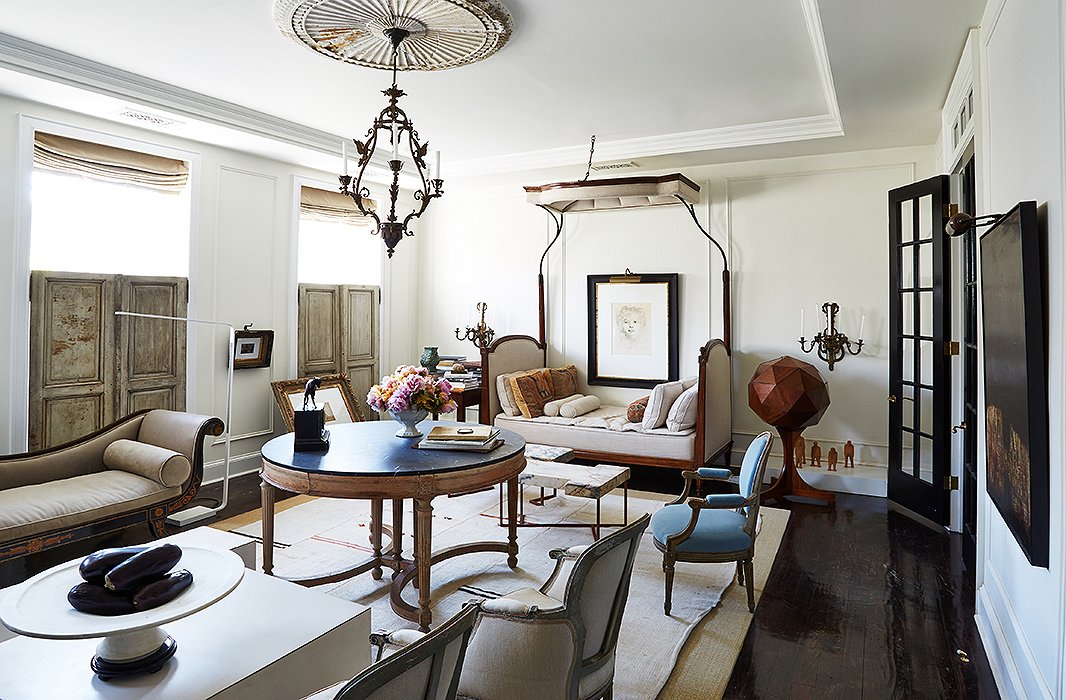
Gustavian style isn’t all whites, beiges, and grays. Here, the blue upholstery of the armchair and the dark wood of the door, floor, and picture frames help ground the disparate elements. Photo by Frank Tribble.
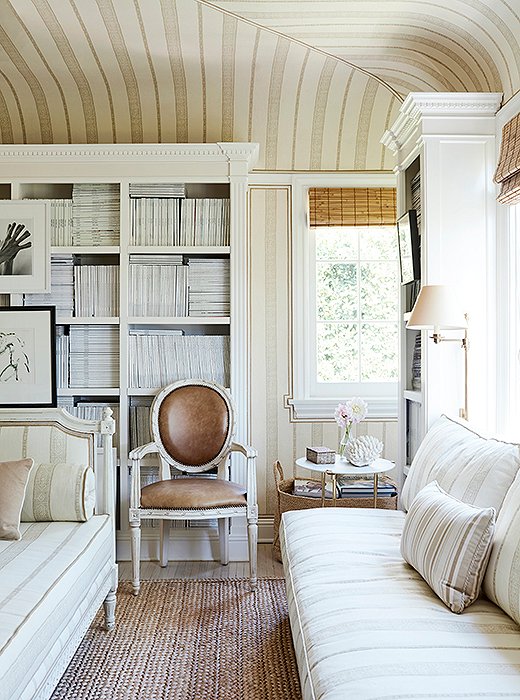
In lieu of color, this room relies on texture—the sisal rug, the matchstick blind, the leather chair upholstery (not truly Gustavian, but in the same quietly sophisticated spirit)—for contrast. Photo by Joe Schmelzer.
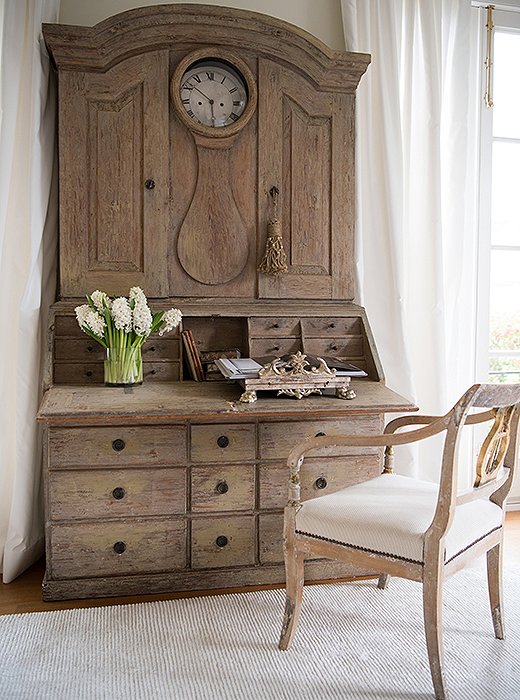
Gustavian furniture tended to be multifunctional. Desks like this one doubled as dressers; the seats of benches lifted up to reveal additional storage. Pretty and practical: Sounds good to us. Photo by Paul Costello.
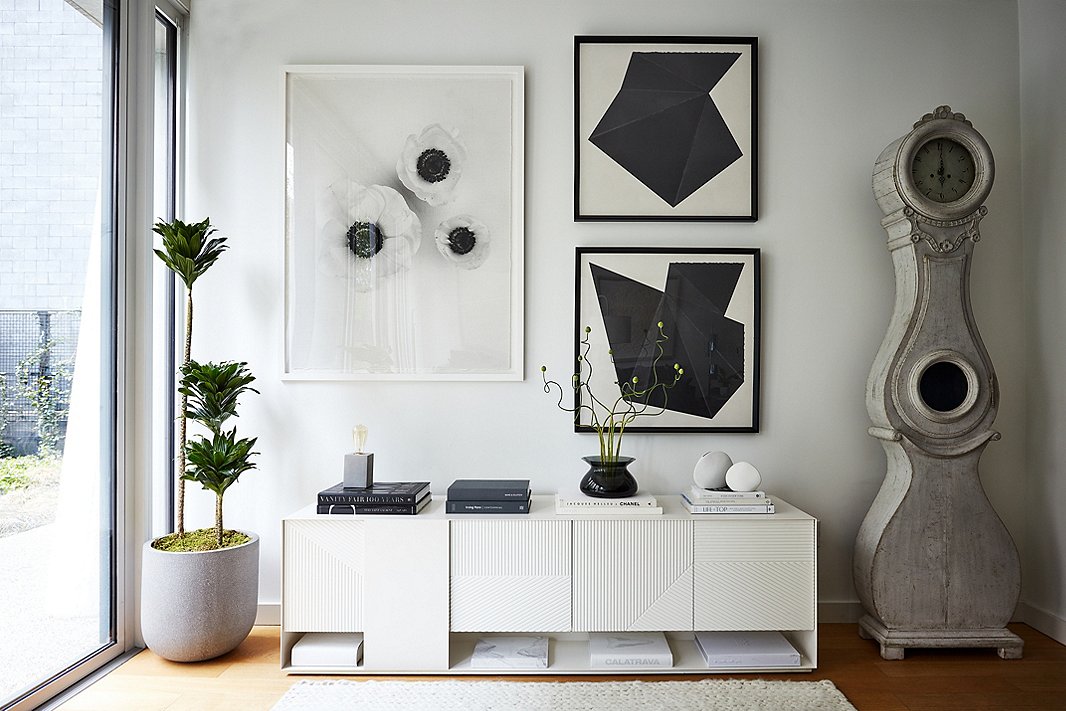
If any one furnishing epitomizes Gustavian decor, it’s the Moro clock, named for the Swedish locale where it originated. Juxtaposed here with modern art (from Dawn Wolfe and Lillian August) and a minimalist console, it demonstrates how versatile the style is. Photo by Frank Tribble.
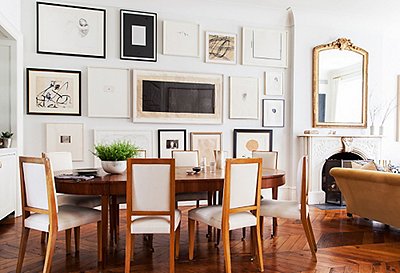
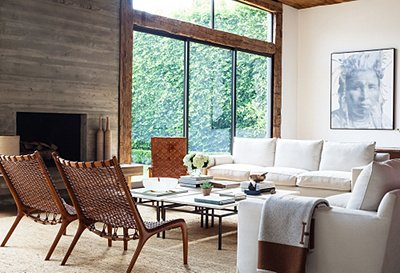
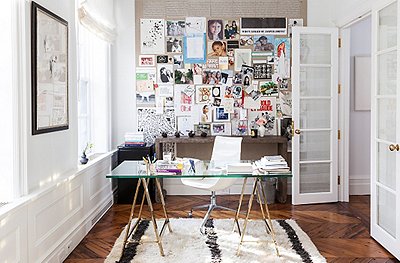
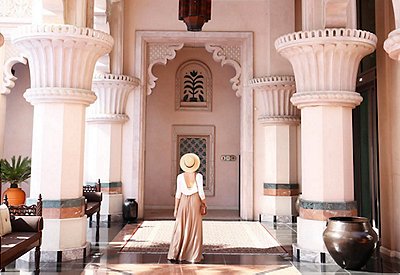
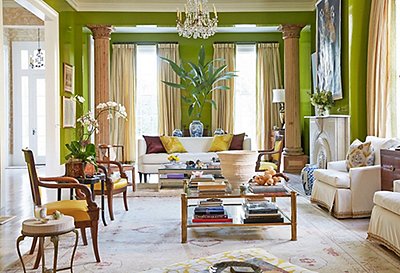
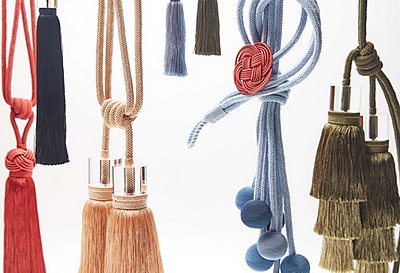
Join the Discussion